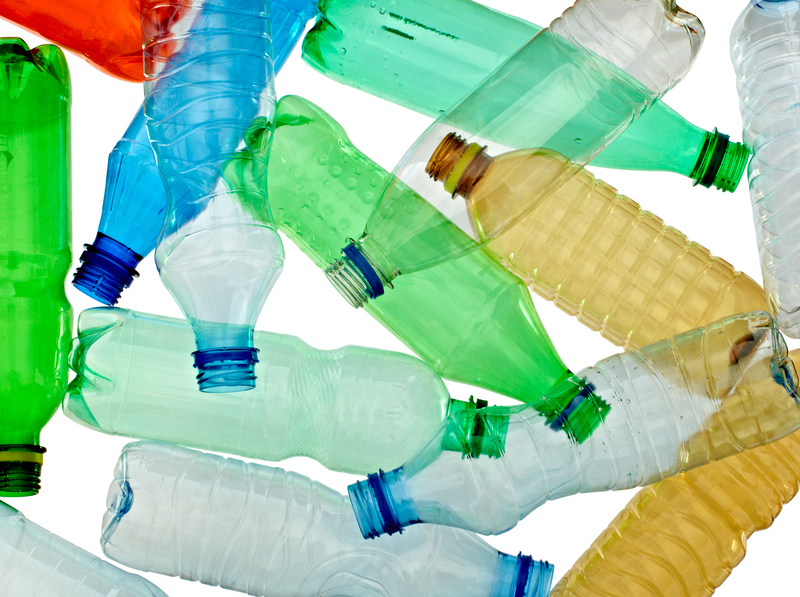Easy Steps for Responsible PPE Waste Disposal at Home
The rise in the use of personal protective equipment (PPE) has played a pivotal role in safeguarding our health during critical times. Items like disposable masks, gloves, and face shields have become part of our daily routine. However, the increase in PPE waste has also underscored the importance of responsible disposal to ensure household safety and environmental protection. In this article, we outline straightforward and practical steps for responsible PPE waste disposal at home, enabling you to minimize environmental impact while maintaining a safe household.
Why Responsible PPE Waste Disposal at Home Matters
PPE such as face masks and gloves are made of materials that do not break down easily in the environment. Incorrect disposal can result in:
- Environmental pollution, including waterways and urban landscapes
- Health risks to waste handlers and the public
- Potential spread of viruses and harmful bacteria
By following easy steps for responsible PPE waste disposal at home, each person can contribute to safeguarding public health and protecting our planet.

Understanding PPE Waste: What Needs Special Attention?
To practice proper PPE waste management, it's important to recognize what qualifies as PPE waste. Common items found in households include:
- Single-use face masks (surgical masks, N95, KN95)
- Disposable gloves (latex, vinyl, nitrile)
- Face shields (typically plastic)
- Sanitizing wipes and tissues
These items are designed for single-use or limited reuse and should not be thrown directly into recycling bins due to potential contamination and their material composition.
Step 1: Minimize PPE Waste at the Source
Reducing the amount of PPE waste you generate is the first and most effective step in responsible disposal. Consider these practical ways to cut down usage:
- Opt for reusable cloth masks whenever possible, and properly wash them after each use.
- Use hand washing with soap and water when at home to reduce reliance on gloves.
- Only use disposable PPE when absolutely necessary, such as during illness, close-contact caregiving, or outings in crowded areas.
By minimizing PPE use, you not only cut down on waste but also save on recurring purchase costs.
Step 2: Safe Handling and Storage of Used PPE Items
Always treat used PPE as potentially contaminated. To avoid cross-contamination, follow these tips:
- Designate a small, lined bin with a lid specifically for PPE waste in your household.
- Place used PPE items directly into the bin. Avoid leaving them on surfaces where children or pets may come into contact.
- Do not attempt to disinfect and reuse single-use PPE unless the manufacturer indicates it's safe to do so.
- Separate PPE waste from regular household trash and recyclables.
*Tip: Use a plastic bag to line the bin and tie it securely when it's time to take out the refuse, ensuring no contact with the waste.
Step 3: Correct Disposal of PPE in the Trash
Are PPE Items Recyclable?
Most disposable PPE equipment is not recyclable through standard curbside collection programs. Items such as masks, gloves, and disposable shields contain synthetic materials and may harbor bacteria or viruses. Never place PPE in the recycling bin.
How to Dispose of PPE Waste Responsibly
- Once your PPE waste bin is full, tie the bag securely with a double knot to prevent leaks.
- If you think the waste may contain infectious materials (e.g., when caring for a sick household member), double-bag it to provide an extra layer of protection.
- Immediately wash your hands with soap and water for at least 20 seconds after handling used PPE or waste bags.
- Place the bagged PPE waste in your household trash bin, not in recycling or compost bins.
Proper bagging and disposal help prevent exposure for sanitation workers and reduce the risk of littering during trash collection.
Step 4: Additional Considerations for Special Circumstances
If Someone in Your Household Is Sick
If you are caring for someone with a contagious illness, follow these extra safety steps:
- Keep PPE waste separate from other household waste.
- Consider waiting 72 hours before putting PPE waste out for collection, if local guidelines advise this practice.
- Double-bag all PPE from the sick person's room and wash hands thoroughly after handling.
What About Biodegradable PPE?
Eco-friendly PPE alternatives are becoming more popular. Some masks or gloves claim to be biodegradable or compostable, but verify the manufacturer's instructions. Most municipal composting facilities do not accept PPE waste due to contamination risks.
Keeping Children and Pets Safe from PPE Waste
Place bins out of reach of children and pets, as PPE can pose a choking hazard or risk of contamination.
Step 5: Proper Disposal of Sanitizing Wipes and Tissues
Sanitizing wipes and tissues used for cleaning surfaces or hands should also be disposed of properly to maintain hygiene and environmental responsibility. Follow these tips:
- Never flush wipes or tissues down the toilet, even if labeled "flushable." This can cause clogs in household and municipal sewer systems.
- Bag used wipes and tissues with PPE waste and dispose in the general trash.
Step 6: Clean and Disinfect Waste Disposal Areas
The area where you store your PPE waste bin can become a hotspot for germs. Here's how to keep it safe:
- Regularly clean and disinfect the waste bin using a household disinfectant.
- Wash your hands after every interaction with the bin or bagged waste.
Step 7: Educate Your Household Members
*Getting everyone involved is vital for effective responsible PPE disposal at home:*
- Explain the importance of not littering PPE outside or in public spaces.
- Demonstrate proper removal and disposal techniques to family members, especially children.
- Encourage handwashing as the final step after handling any used PPE item.
Step 8: Stay Informed about Local PPE Disposal Guidelines
Local waste management services may periodically release updated guidelines for PPE waste collection. Consult your local municipality's website or customer service line for:
- Designated drop-off points for hazardous household waste (if available)
- Special collection services for households under quarantine
- Recommendations on double-bagging or specific waste separation rules
Environment-Friendly Alternatives: Rethink Your PPE Use
While PPE waste disposal is essential, reducing PPE waste at the source is even more beneficial. Here are some creative, eco-friendly alternatives for your household:
- Use washable cloth masks for daily activities instead of disposable ones.
- Swap disposable gloves for regular handwashing when possible.
- Choose environmentally conscious brands or biodegradable PPE, ensuring you follow their disposal instructions.
- Purchase only what you need, avoiding stockpiling that can lead to unnecessary waste.
Small, consistent actions have a significant impact on reducing the burden of PPE waste on our environment.
Common Mistakes to Avoid with PPE Waste Disposal at Home
Avoid these common errors to ensure you're practicing the most responsible PPE waste management at home:
- Flushing masks, gloves, or wipes down the toilet: This causes plumbing and environmental problems.
- Throwing PPE into the recycling bin: These items contaminate recyclables and risk the health of sorting staff.
- Leaving used PPE in public spaces or walkways: Increases litter and public health risks.
- Reusing disposable PPE: Reduces their effectiveness and can increase risk of germ transmission.
PPE Waste Disposal and Community Responsibility
Each household's commitment to responsible PPE disposal contributes to a broader community effort to control disease spread and protect the environment. Share knowledge with neighbors, participate in community clean-ups, and support legislation that promotes sustainable waste practices.

Frequently Asked Questions on PPE Waste Disposal at Home
-
Can PPE be recycled at home?
No. Most disposable PPE (masks, gloves) are not recyclable through household recycling programs due to contamination risk and material composition. -
Is it safe to burn PPE waste?
No. Burning PPE at home can release toxic substances. Always use your municipal waste service for disposal. -
What if my area offers PPE recycling programs?
Some specialty programs do exist for bulk PPE disposal, though these are more common for businesses. Check with your local authorities for updates. -
Can I compost biodegradable PPE?
Generally no. Most municipal composting facilities prohibit the inclusion of PPE due to contamination risks, even if labeled 'biodegradable.'
Conclusion: Small Steps Make Big Difference
Practical and easy steps for responsible PPE waste disposal at home don't just keep your household safer; they also protect the well-being of your community and the environment. By minimizing usage, following safe storage and disposal guidelines, and staying informed, you can make a substantial positive impact. Encourage those around you to adopt these practices too. Remember: every properly disposed of mask or glove is a step toward a cleaner and healthier world.
Further Resources
- Guidelines from your local waste management authority
- World Health Organization: Waste Management
- EPA Guidelines on PPE Disposal
Start today--take responsibility for your PPE waste and inspire others to do the same!
